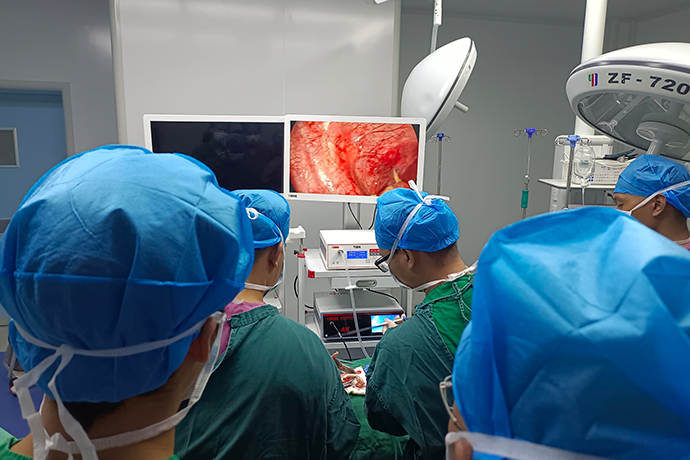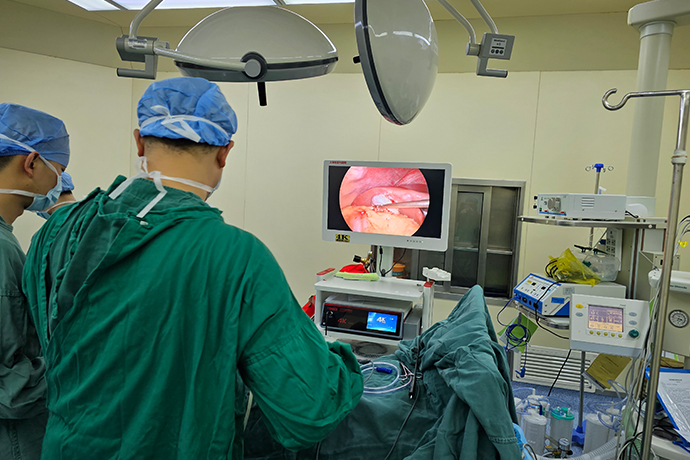[Laparoscopy in Hepatobiliary Surgery] Gallbladder polyps
Release time: 06 May 2023 Author:Shrek
The gallbladder polyps usually referred to clinically actually refer to polypoid lesions of the gallbladder (PLG), also known as protruding lesions, which is a general term for the protruding lesions found in imaging diagnostics protruding into the gallbladder cavity. It is a common gallbladder lesion, and most cases are benign space-occupying lesions in the gallbladder lumen. Because PLG lacks obvious symptoms or signs, it is often easily overlooked by people and can easily cause delays for patients. It is currently considered to be one of the predisposing factors for gallbladder cancer.

Can gallbladder polyps become cancerous?
Generally speaking, gallbladder polyps are first divided into benign lesions and malignant lesions. That is to say, gallbladder polyps may become cancerous, but not all gallbladder polyps will become cancerous.
Its benign lesions are subdivided into nonneoplastic polyps and neoplastic polyps.
Non-neoplastic polyps: cholesterol polyps, adenomyosis of the gallbladder, and inflammatory polyps. It is generally considered that cholesterol polyps and inflammatory polyps are benign lesions with no potential for malignant transformation. Adenomyosis of the gallbladder is regarded as a precancerous lesion, and the literature reports that its cancerous rate is 3% to 10%.
Neoplastic polyps: adenoma, hemangioma, fibroid, leiomyoma and lipoma, etc. Neoplastic polyps are considered to be an important risk factor for gallbladder cancer, and the most common neoplastic polyps of the gallbladder are adenomas derived from gallbladder epithelium. Studies suggest that the size of gallbladder adenoma is directly related to its malignant potential. Years of research have consistently concluded that when gallbladder polyps are larger than 10 mm, the possibility of malignant transformation is significantly increased. Surgical resection and intraoperative frozen pathological examination are recommended.
The indications for gallbladder polyp surgery are summarized as follows:
a. Single, lesion diameter > 10 mm.
b. Age > 50 years old.
c. Sessile or broad-based lesions.
d. The base of the lesion becomes wider and tends to increase in a short period of time, or the surrounding mucosa infiltrates and thickens.
e. Combined with gallbladder disease, such as gallbladder stones, acute or chronic cholecystitis with obvious clinical symptoms.
f. Combined with sclerosing cholangitis, choledocholithiasis and other bile duct lesions.
g. Polyps, long pedicles or polyps in the neck of the gallbladder, which affect the emptying of the gallbladder and have clinical symptoms such as biliary colic attacks.
h. Color Doppler ultrasound measurement and blood flow or CT, MR showed enhancement of lesions.
i. For patients with irregular gallbladder wall thickening, ultrasound and other auxiliary examinations suspect the possibility of gallbladder malignant transformation.
Some people will say: Since the gallbladder has polyps and may become cancerous, wouldn't it be "once and for all" if I just removed the gallbladder? However, the small gallbladder also has a "big" function!
So, is there a "best of both worlds" method that can remove polyps and keep the gallbladder? The answer is minimally invasive gallbladder preservation surgery.
Surgical steps
1. Opening at the bottom of the gallbladder.
2. Insert a choledochoscope through the opening of the gallbladder to collect polyps.
3. Insert a rigid choledochoscope through the opening of the gallbladder to collect polyps.
4. Suture the gallbladder bottom opening.

- Recommended news
- 【General Surgery Laparoscopy】Cholecystectomy
- Surgery Steps of Hysteroscopy for Intrauterine Adhesion
- [Gynecological Hysteroscopy] Techniques for Preventing and Treating Complications of Hysteroscopic Surgery
- [Gynecological Hysteroscopy] Hysteroscopic Adhesiolysis
- [Gynecological Hysteroscopy] IUD Removal under Hysteroscopy